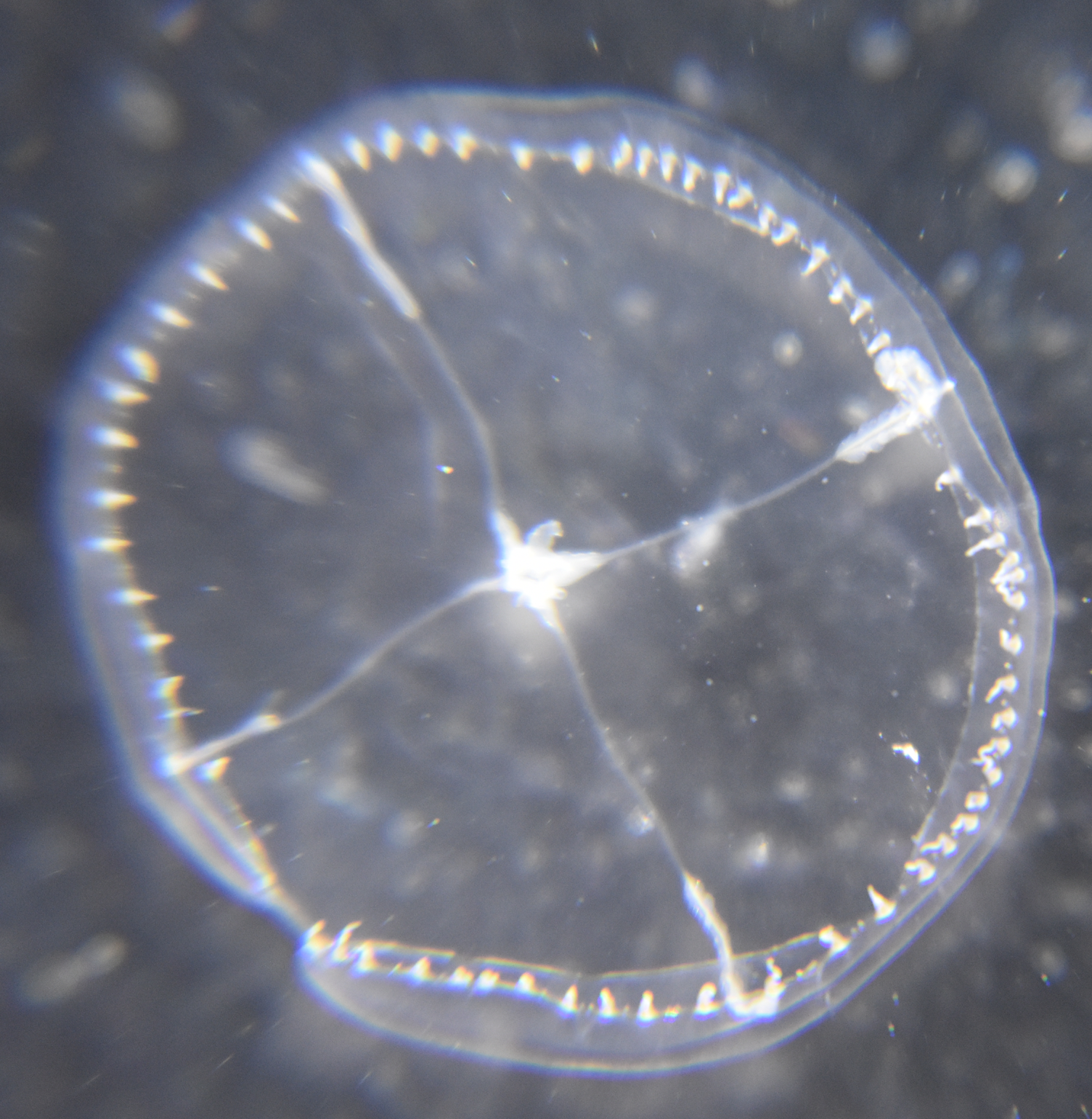Description: As a hydromedusa, this small medusa has a velum and a short manubrium. This species is wider than high and has 4 unbranched radial canals which have no lateral diverticula but run all the way to the bell margin. The stomach is held tightly to the subumbrella rather than hanging down well away from it with the manubrium. The lips of the mouth are relatively short and the manubrium does not hang down very far. The many (up to around 80), unbranched tentacles are of similar length as one another, do not have prominent rings of nematocysts, and are distributed evenly around the margin of the bell. There are no ocelli at the base of the tentacles. The light-colored, sausage-shaped gonads are associated with the outer ends of the radial canals and are mostly attached along the canals rather than hanging free under the subumbrella. Mature individuals are generally around 1.5 cm diameter.
How to Distinguish from Similar Species:Clytia lomae matures at about 1 cm diameter. It has dark brown, gray, or yellowish gonads, and only up to about 40 tentacles. Mitrocoma cellularia has up to 350 tentacles which alternate long and short; its lips are long and extended, the gonads and/or the exumbrella may be pale blue, and the gonads may be associated with the entire length of the radial canals, especially the inner canal ends.
Geographical Range: Alaska to central Oregon
Depth Range: Epipelagic
Habitat: Midwater.
Biology/Natural
History: Originally
this medusa
was known
as Phialidium
gregarium,
but later it became known that it is the same genus as a Clytia
hydroid species, so now it is known as Clytia
gregaria. The medusa
can often be found in large aggregations. It swims in bursts
interspersed
with slowly sinking while upside-down. The hydroid (polyp)
form of this species also occurs along our coast.
| Return to: | |||
| Main Page | Alphabetic Index | Systematic Index | Glossary |
References:
Dichotomous Keys:Carlton, 2007
Flora and Fairbanks, 1966
Kozloff, 1987, 1996
General References:
Kozloff,
1993
Scientific Articles:
Web sites:
General Notes and
Observations: Locations, abundances,
unusual behaviors:
Authors and Editors
of Page:
Dave Cowles (2018): Created original page
CSS coding for page developed by Jonathan Cowles
Salish Sea Invertebrates web site provided courtesy of Walla
Walla University
